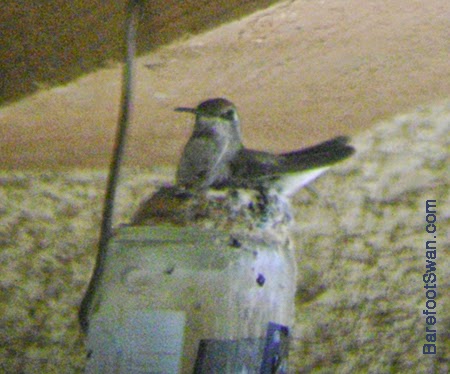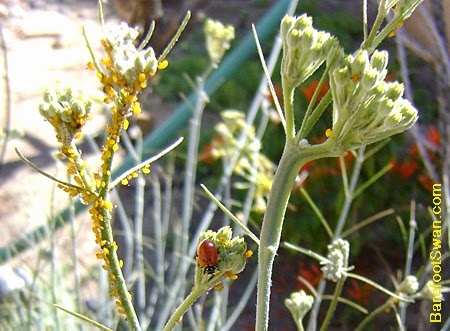
We continue watching the hummingbird nest on our back patio, using the field scope set up in our kitchen.
Right after the eggs hatched, mom hummer appeared fidgety when sitting on the nest.
Probably because she was now sitting on 2 wiggly babies instead of 2 eggs.
Mom hummer was staying busy, constantly making forays out into the yard to gather insects and nectar, then returning to the nest to quickly feed her babies.

We also noticed that the babies had started pooping over the side of the nest.
Every now and then we would see a tiny bare-naked hummingbird butt appear above the edge of the nest, and proceed with the projectile pooping.
This is a natural behavior, which helps keep things cleaner inside the nest.
It took a while before we could get a picture of mom and her babies together.
They were so small we couldn't see them above the edge of the nest unless they were feeding (or pooping).
And her feeding stops were surprisingly brief and efficient.
With patience, we were finally able to get a baby pic just as mom left the nest after a feeding. One is easily seen, with its short little beak and big eyes.
"Any glimpse into the life of an animal quickens our own and makes it so much the larger and better in every way."
~ John Muir; Author, naturalist and wilderness advocate (1838-1940)




























